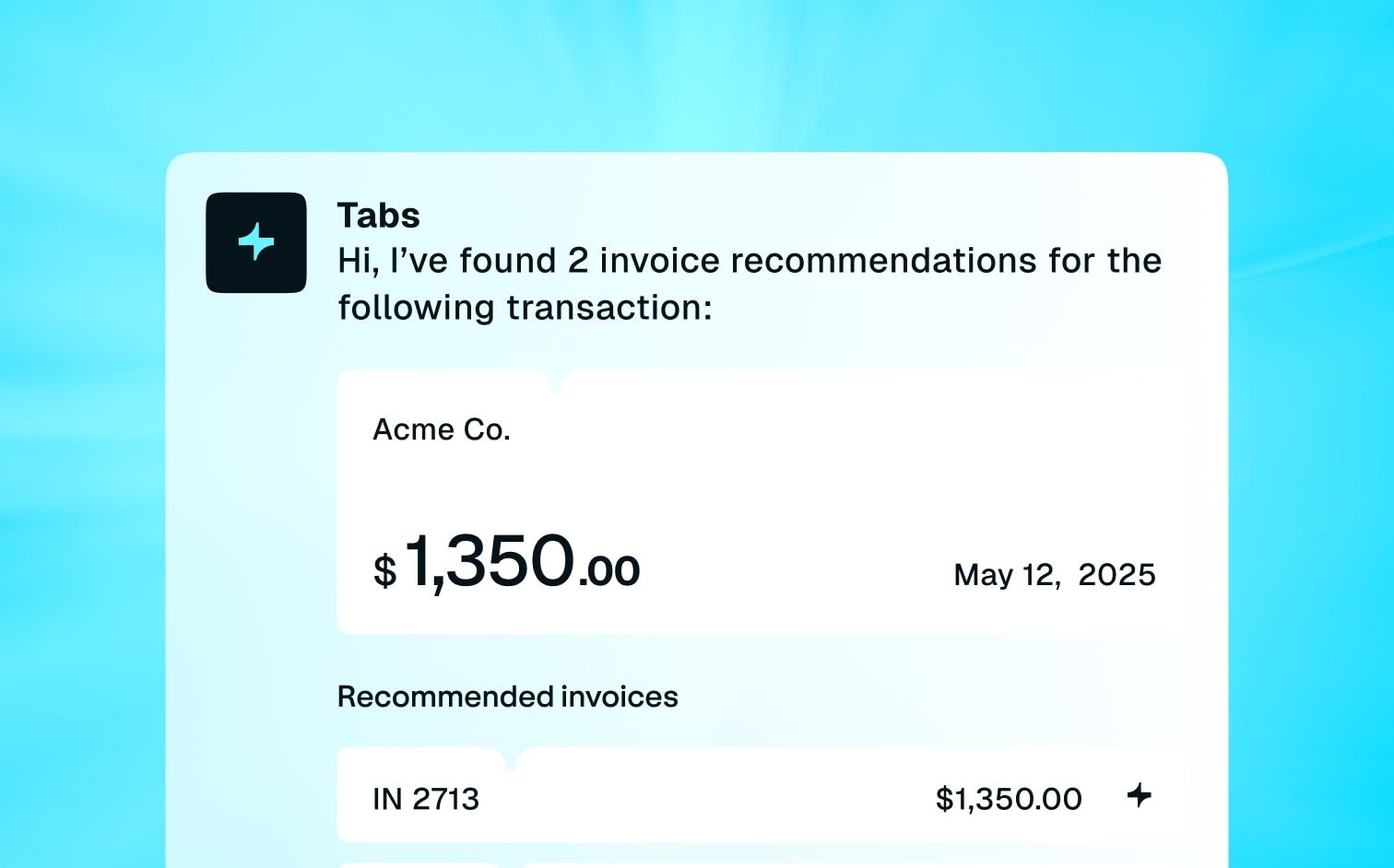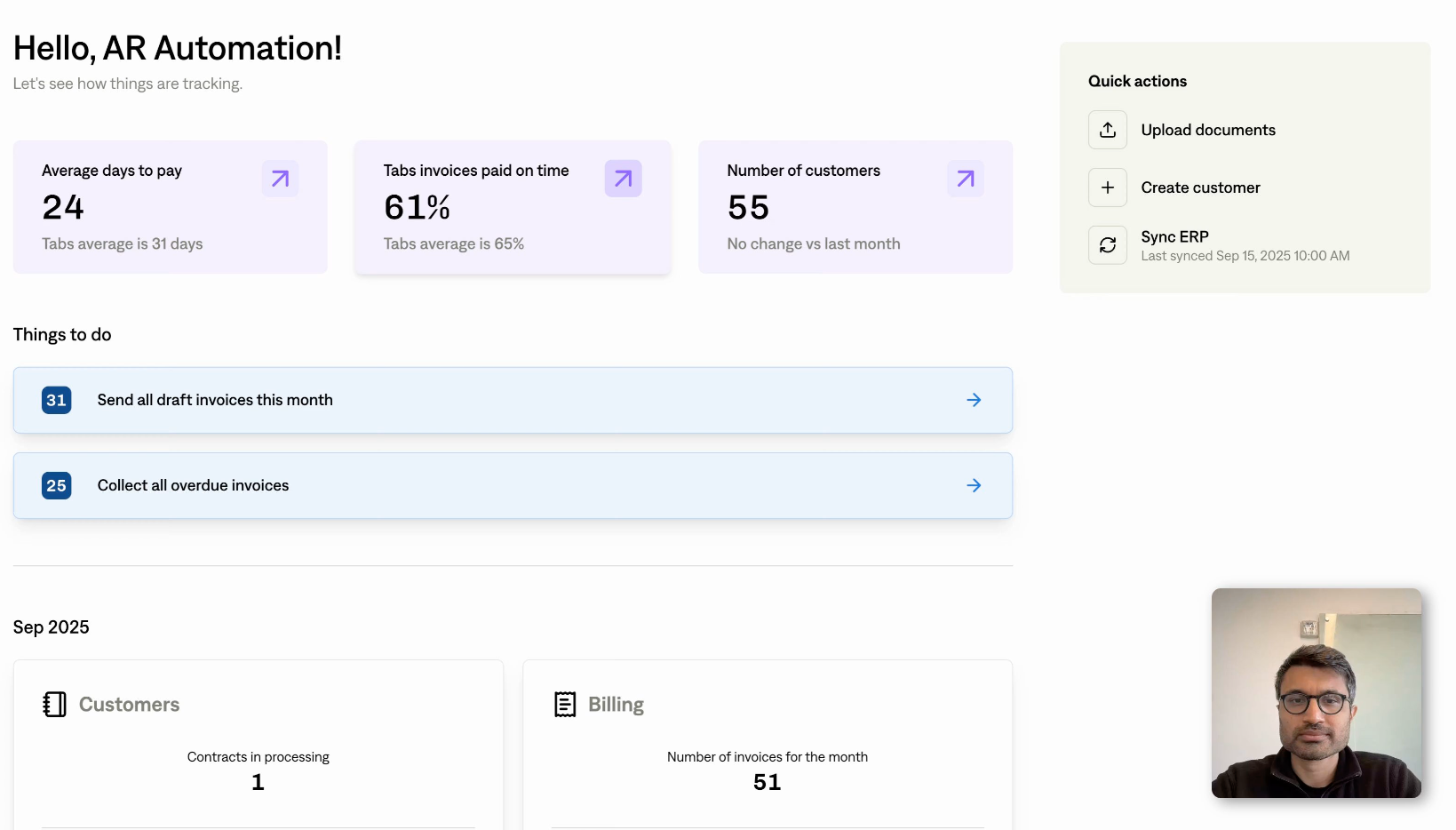Your AR team is the engine of your SaaS business's financial health. But are they firing on all cylinders? Too often, these teams are bogged down in urgent tasks, losing sight of what truly moves the needle. Prioritizing AR team tasks effectively is the key to unlocking efficient collections and predictable cash flow. In this post, we'll explore how to strategically manage your team's workload and free them up to focus on what matters most.
This misalignment arises because there is no clear prioritization. Should an AR representative focus on a $100 invoice that would be paid with a quick reminder or a $16,000 payment that might take more effort to recover? Without structured prioritization, many AR professionals spend their time on lower-value activities. This slows down cash flow and increases the likelihood of bad debt.
Real-time information and decision management tools, instead of outdated systems or manual processes, will help overworked and understaffed AR teams step back and assess whether they are focusing on the most impactful tasks. In fact, businesses that rely on manual AR processes spend 67% more time handling overdue payments than those that leverage automation.
Why AR Teams Struggle with Prioritization
The problem of prioritization in AR persists because many organizations continue to operate under traditional, waterfall-like workflows. In this approach, tasks are broken down into sequential steps that are completed one after another, often without considering the overall financial impact. AR teams are tasked with completing the most immediate items, such as sending out invoices and following up on overdue payments, but they do not have a system in place to continuously reassess which tasks should take priority based on their potential impact on cash flow.
Much like the old waterfall model of software development, where each phase depends on the previous one, AR teams often follow a rigid process: send an invoice, wait for a payment, follow up if it’s overdue. While this works in theory, it ignores the reality that some payments are far more valuable than others, and that chasing after a small invoice may not be the best use of time when a much larger payment is hanging in the balance. Failing to dynamically adjust priorities in real-time means that AR teams miss opportunities to optimize cash flow.
Moreover, AR teams often lack access to comprehensive, up-to-date information. Many AR professionals rely on spreadsheets, emails, and basic ERP systems that don’t provide the data or analytics necessary to make informed decisions. Without the right data, AR teams are left to make decisions based on gut feelings or outdated practices rather than real-time insights. This lack of visibility into the full picture of accounts receivable makes it even harder to prioritize effectively.
There may also be a critical thinking gap in some AR departments. Some teams are highly capable and have robust AR processes, while others may outsource the function to lower-cost regions, where AR professionals simply follow a set of instructions without considering the larger financial context. In these cases, AR clerks may focus on sending out reminders or processing small payments without taking the time to evaluate which actions will bring in the most revenue. This “check-the-box” approach to AR is another reason why prioritization remains such a persistent challenge.
Key Takeaways
- Prioritize strategically: Focus on high-impact tasks, not just urgent ones. Continuously re-evaluate what matters most for your bottom line using real-time data and projected revenue impact.
- Modernize your AR process: Ditch manual tasks and outdated systems. Use automation and real-time data insights to get a clear view of your AR and make informed decisions about prioritization.
- Embrace dynamic prioritization: Adopt a flexible approach to AR, similar to agile software development. Regularly reassess priorities based on real-time data and potential impact on cash flow to ensure your team focuses on the most important financial goals.
What Does an AR Team Do?
Core AR Team Tasks
Invoicing and Billing
Accounts Receivable (AR) professionals manage the process of converting sales into cash. This involves generating and sending invoices, ensuring their accuracy, and delivering them promptly to customers. A smooth invoicing process is the first step towards healthy cash flow.
Payment Processing and Posting
AR teams handle various payment methods, from checks and ACH transfers to credit cards and online payment platforms. They match incoming payments to corresponding invoices and process customer refunds or credits when necessary. Efficient payment processing ensures accurate record-keeping and minimizes discrepancies.
Credit Control and Collections
Following up on overdue accounts is a critical AR function. This includes tracking late payments, sending reminders, and working with customers to resolve payment issues. Maintaining positive customer relationships throughout the collections process is essential for long-term success.
Reconciliation
AR teams regularly reconcile financial records to ensure accuracy and investigate any discrepancies. This involves comparing internal records with bank statements and customer payment information. Regular reconciliation helps identify and resolve errors promptly.
Reporting and Analysis
Creating reports on key metrics like overdue accounts, payment trends, and Days Sales Outstanding (DSO) provides valuable insights into a company's cash flow. These reports inform decision-making and help improve AR processes. Robust reporting is crucial for understanding financial performance. For example, Tabs offers robust reporting features.
Daily, Weekly, and Monthly AR Tasks
Daily Tasks
Daily AR tasks typically include processing incoming payments, sending out invoices, and responding to customer inquiries. These routine activities ensure a steady flow of cash and maintain accurate records.
Weekly Tasks
Weekly tasks might involve reviewing aging reports to identify overdue accounts and initiating the collections process. This proactive approach helps prevent late payments from becoming problematic.
Monthly Tasks
Month-end closing activities, such as reconciling accounts and generating reports, are crucial monthly tasks. These procedures provide a comprehensive overview of AR performance and inform financial reporting.
AR Team Challenges in SaaS
Managing Subscription Billing
Recurring Invoices and Payments
SaaS businesses rely on recurring billing, which presents unique challenges for AR teams. Managing a high volume of recurring invoices and payments requires efficient systems and processes. Automating these tasks can significantly reduce manual effort and improve accuracy. Consider a platform like Tabs, which offers automated invoicing solutions.
Upgrades, Downgrades, and Cancellations
Handling subscription changes, such as upgrades, downgrades, and cancellations, adds complexity to the billing process. AR teams must ensure that invoices accurately reflect these changes and that revenue is recognized correctly.
Revenue Recognition
SaaS revenue recognition can be complex due to recurring subscriptions and variable pricing models. AR teams must adhere to accounting standards and ensure that revenue is recognized in the correct period. Simplifying revenue recognition is crucial for accurate financial reporting. SaaS businesses can leverage tools like Tabs to simplify revenue recognition.
Maintaining Customer Relationships
Proactive Communication
Clear and proactive communication with customers is essential in SaaS. Keeping customers informed about their subscriptions, upcoming payments, and any changes to their accounts helps build trust and reduces the likelihood of disputes.
Personalized Support
Providing personalized support to customers can improve satisfaction and reduce churn. Addressing customer inquiries promptly and offering tailored solutions strengthens relationships and fosters loyalty.
Prioritizing AR Team Tasks for Maximum Impact
Prioritization Frameworks for AR Teams
Eisenhower Matrix (Urgent/Important)
The Eisenhower Matrix, which categorizes tasks based on urgency and importance, can be a valuable tool for AR teams. This framework helps prioritize high-impact tasks and delegate or eliminate less important ones.
Value vs. Effort
Prioritizing tasks based on their value relative to the effort required is another effective approach. Focusing on high-value, low-effort tasks maximizes impact and optimizes resource allocation.
Key Performance Indicators (KPIs) and Metrics for Prioritization
Days Sales Outstanding (DSO)
DSO measures the average number of days it takes to collect payment after a sale. A lower DSO indicates efficient collections and healthy cash flow. Tracking DSO helps identify areas for improvement in the collections process.
Collection Effectiveness Index (CEI)
CEI measures the effectiveness of a company's collections efforts. A higher CEI indicates a strong collections process. Monitoring CEI helps assess the performance of collections strategies.
Customer Churn Rate
While not directly related to collections, customer churn rate can impact AR performance. High churn rates can lead to decreased revenue and increased collection challenges. Understanding churn and its drivers can inform AR strategies.
Tools and Technologies for AR Task Management
AR Automation Software
AR automation software streamlines many AR tasks, including invoicing, payment processing, and collections. Automation reduces manual effort, improves accuracy, and frees up AR teams to focus on higher-value activities. Companies like Tabs provide AR automation software for these purposes.
CRM Integrations
Integrating AR systems with Customer Relationship Management (CRM) platforms provides a holistic view of customer interactions. This integration enhances communication and collaboration between sales and AR teams.
Reporting and Analytics Dashboards
Reporting and analytics dashboards provide real-time visibility into key AR metrics. These tools enable data-driven decision-making and help identify trends and areas for improvement. Robust reporting capabilities are essential for optimizing AR performance. Explore Tabs' reporting and analytics dashboards for more information.
Tabs: Streamlining AR for SaaS Businesses
Automated Billing and Invoicing
Tabs offers automated billing and invoicing solutions designed for SaaS businesses. These tools streamline recurring billing processes, reduce errors, and improve efficiency.
Simplified Revenue Recognition
Tabs simplifies revenue recognition for SaaS companies by automating complex calculations and ensuring compliance with accounting standards. This simplifies financial reporting and provides accurate revenue insights.
Robust Reporting and Analytics
Tabs provides robust reporting and analytics tools that offer real-time visibility into key AR metrics. These dashboards empower SaaS businesses to make data-driven decisions and optimize their AR processes.
Dynamic Prioritization: Solve Your AR Team Challenges
To solve this problem, AR teams need to adopt a more agile approach—what can be termed dynamic prioritization. Dynamic prioritization is the continuous reassessment of tasks based on their potential business impact, rather than their order in a linear workflow. It enables AR teams to shift their focus in real time, ensuring that the most important tasks always take precedence.
Dynamic prioritization involves two key components:
- Real-Time Data: AR teams need access to real-time data that shows them which customers are likely to pay, which payments are overdue, and which invoices are the most critical to the company’s cash flow. This requires integrating AR processes with more advanced analytics tools and systems that provide insights into customer behavior, payment history, and outstanding balances. With this information, AR teams can make informed decisions about where to focus their efforts.
- Automation of Decision-Making: By using software that can analyze real-time data and recommend the best course of action, AR teams can focus on high-value activities while letting the system handle routine tasks. For example, software could automatically prioritize a $1 million invoice over a $100 invoice, or flag high-risk customers that require immediate attention.
Dynamic prioritization mirrors the agile methodologies used in software development, where teams continuously reassess and adjust their priorities based on changing circumstances. Instead of following a rigid, step-by-step process, AR teams can be more flexible and responsive, adjusting their actions based on what will bring in the most revenue. This approach not only improves cash flow but also reduces the risk of bad debt by ensuring that large or critical payments are not overlooked.
A key benefit of dynamic prioritization is that it empowers AR teams to think strategically rather than just execute tasks. For example, if an AR professional knows that chasing a $16,000 invoice will have a greater impact on cash flow than processing a smaller payment, they can focus their efforts on recovering the larger sum. In some cases, it might even be worth spending extra time or resources—such as flying out to a customer’s headquarters—to ensure that a large payment is collected on time. This kind of strategic thinking is only possible when AR teams have the right tools and data to make informed decisions.
Furthermore, dynamic prioritization allows AR teams to avoid the trap of "busy work"—spending time on low-value tasks that don't move the needle for the business. Instead of spending hours following up on small invoices, AR professionals can focus their energy on high-priority payments that will make a real difference to the company’s bottom line.
Ready to Streamline Your AR Process?
The challenge of prioritization in Accounts Receivable is a persistent issue, driven by outdated workflows, lack of real-time information, and a failure to think strategically about which tasks will have the greatest impact on cash flow. However, by adopting a dynamic prioritization approach, AR teams can overcome these challenges and ensure that they are always working on the most important tasks.
Dynamic prioritization empowers AR professionals to focus on high-value activities, supported by real-time data and automated decision-making tools. This not only improves cash flow but also reduces the risk of bad debt, enabling organizations to operate more efficiently and effectively. As businesses continue to evolve, AR teams must embrace agile methodologies and shift away from rigid, waterfall-style processes. Only then can they truly optimize their efforts and drive better financial outcomes.
Related Articles
- How Agile Concepts Will Change the Game for B2B Accounts Receivable
- AR Automation: Streamline Billing and Boost Efficiency
- Your Guide to AR Automation Software
- Accounts Receivable Automation: Benefits & Implementation
- Accounts Receivable Management: A Complete Guide
Frequently Asked Questions
How can smaller SaaS businesses with limited resources implement dynamic prioritization?
Dynamic prioritization doesn't necessarily require expensive enterprise software. Start by clearly defining your top priorities, like focusing on your highest-value customers or largest outstanding invoices. Simple CRM systems or even well-organized spreadsheets can help track and sort customer information for basic prioritization. As your business grows, consider more sophisticated automation tools. Even small steps towards dynamic prioritization can make a big difference.
What are some practical first steps to move away from manual AR processes?
Begin by identifying your most time-consuming manual tasks. Often, these are repetitive actions like sending invoices or follow-up reminders. Look for software solutions that automate these specific areas first. This targeted approach allows you to see immediate benefits and build momentum for further automation.
Beyond software, what changes can AR teams make to improve prioritization?
Foster a culture of proactive communication within the AR team and with other departments. Regularly review and adjust your team's processes based on performance data and feedback. Encourage your team to think critically about the impact of their work on overall financial goals. These cultural shifts can significantly improve prioritization effectiveness.
How can AR teams balance the need for dynamic prioritization with the importance of maintaining good customer relationships?
Transparency is key. Communicate clearly with customers about your payment expectations and processes. While prioritizing larger invoices is important, ensure smaller clients still receive timely and respectful communication. Personalization can also help. Segment your customers based on their value and tailor your communication accordingly.
What are some common pitfalls to avoid when implementing a new AR prioritization strategy?
Avoid overcomplicating the process. Start with a simple, manageable framework and gradually refine it as needed. Don't rely solely on automation. Human oversight is crucial for handling complex situations and maintaining customer relationships. Finally, ensure your chosen metrics align with your overall business objectives.





